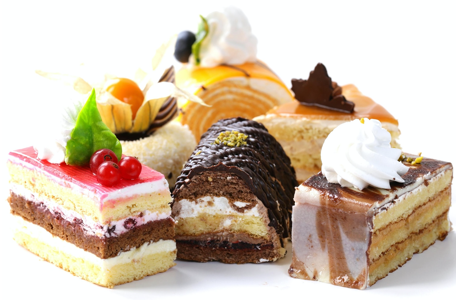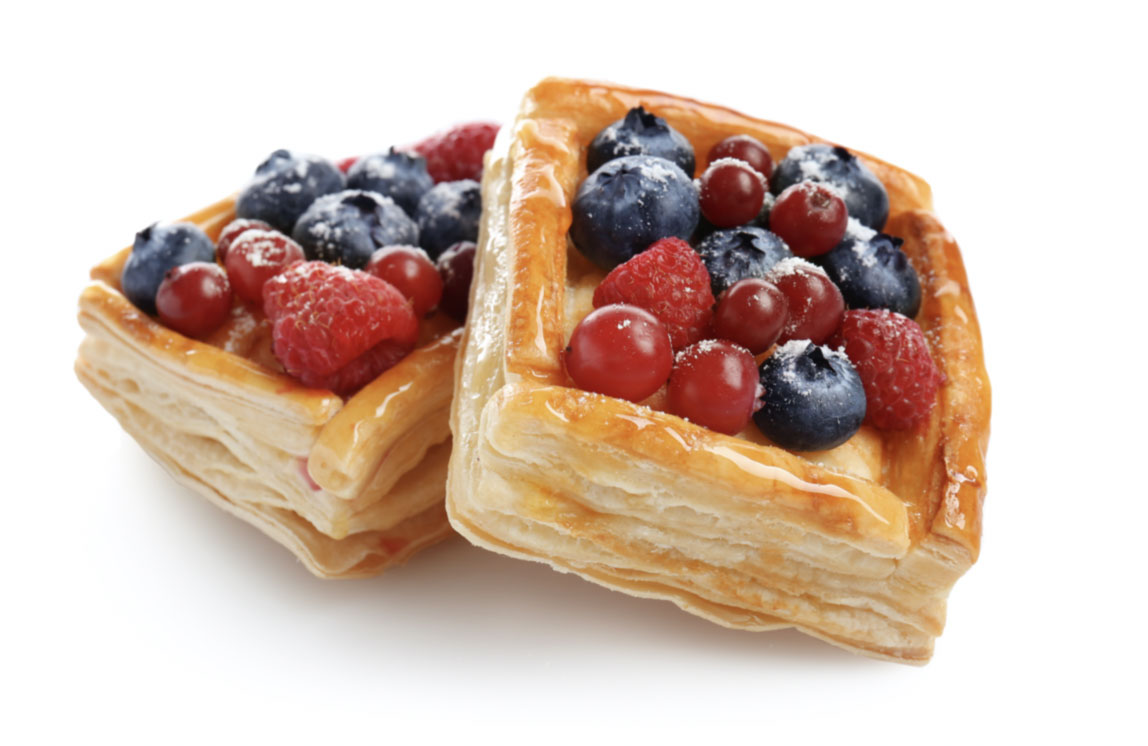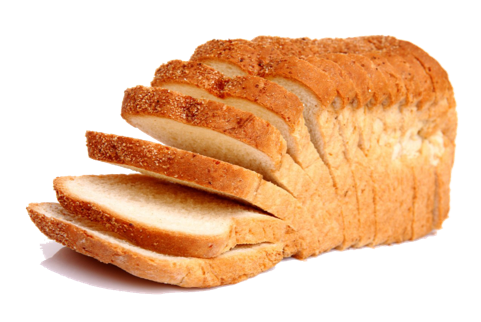Several studies including O’Brien (2009) and Ghotra et al. (2002) have found that fat is important in bakery products as it provides tenderness and improves overall texture, mouthfeel, heat transfer, extension of shelf life, lubrication, and structural integrity. This is supported by Zhou et al. (2011), where they found that shortenings provide the aforementioned functions, as well as air entrapment.
The role of fat in baking
Cauvain and Young (2001), described the role of fat at the initial stage of baking as retaining gas bubbles in dough and preventing their coalescence. According to them, fat ensures excellent gas retention which affects the size and stability of gas bubbles positively. During baking, as the dough temperature in the oven increases, solid fat becomes liquid and air bubbles tend to emerge from the dough and rise to the top. The volume of the end product depends on the holding of air bubbles in the dough. Therefore, the longer the bubbles are held, the larger will be the volume of the end products. Thus fats with high melting point would be able to ensure that. Palm oil has a broad high melting temperature, ranging from 27oC to 45 °C (Devi and Khatkar, 2016). This makes palm oil an ideal ingredient for baking.

Palm oil as a shortening ingredient
In cookie production, in order to facilitate the handling of dough, fats used must be in solid or semisolid state at room temperature (Tarancón et al., 2013). The semi-solid nature of palm oil and its ability to stabilize in β’ polymorphic form makes it an excellent choice for the manufacture of baking fats such as margarine and shortenings. These properties are required for good creaming and baking performances. Furthermore, the increase in consumer awareness on trans-fat has also encouraged the use of palm oil and its fractions, replacing hydrogenated liquid oils, as palm oil is trans-fat free.
For a good baking and development of dough structure, shortenings must have 15- 20 % solid fat content at 25 °C and a minimum of 5 % solid fat content at 40 °C (Latip et al., 2013; des Santos et al.,2014). As shown in Table 1, at 25 °C , the solid fat content of palm oil , palm olein and palm stearin fall short of this requirement (Tarmizi et al., 2007). Shortenings based on 100% palm oil would therefore not perform well in cakes as the cakes do not hold enough air. However, this can be improved by adding palm kernel oil or with the right selection of emulsifiers. Thus, shortenings based on 100% palm oil with good performance could then be produced.
Table 1: Solid fat content percentage of palm oil and its fractions at 25oC and 40 oC
| Solid Fat Content (%) | ||
|---|---|---|
| Type | At 25oC | At 40oC |
| Palm Oil | 13.32 | 1.25 |
| Palm Olein | 1.40 | Null |
| Palm Stearin | 30.22 | 8.97 |
Source: Tarmizi et al. (2007)
Shortenings used in cake production made from palm oil products in combination with butterfat, produce cakes with better baking properties than cakes made with 100% butterfat. The palm oil enhances overall baking performances whilst the butterfat provides the palatable buttery flavour (Sundram et al.,2003).

“Shortenings used in cake production made from palm oil products when combined with butterfat, produce cakes with better baking properties than cakes made with 100% butterfat.”
A study by Sciarini et al., (2013) on the effect of lauric-based shortening with varying solid fat content made from different ratios of high oleic sunflower oil, palm kernel oil and hard palm oil fractions on the properties of dough and sugar-snap biscuits, showed that palm-based shortening were excellent. The study showed that shortening with 20-25% solid fat content produced the best quality biscuits. In another study by Ramli et al. (2008) they found that pound cake made with high oleic palm-based shortening received a high score in flavour, texture and eating quality.
A stable margarine with palm oil
To improve the solid fat content profile and polymorphic stability of margarine, palm oil and its fractions are normally blended with palm kernel oil or palm kernel olein. After all, margarines used in baking do not require refrigeration and therefore could withstand the mixing condition of dough of cookies, biscuits and others. Well-known for its high palmitic acid content, palm oil could aerate fat and sugar mixtures well. This makes palm oil an ideal component for bakery margarines. Palm kernel oil is also a suitable raw material for cake, as it imparts fast crystallisation which provide great creaming properties. Nor Aini and Miskandar (2007a) found that the texture of rolled biscuits made from 100% palm oil was quite similar to those using 100% butterfat. Both biscuits received almost similar scores in the sensory evaluation except for crispiness.
Other than cake margarine and shortening, palm fractions are also used to produce pastry margarine. Good plasticity is required to withstand the layering process of pastry making (Nor Aini and Miskandar, 2007b). Blend of palm oil and its fractions is suitable to prepare pastry margarine and is comparable to commercial pastry margarine especially when high palm stearin content is used (Noor Lida et al., 1996).

“Blend of palm oil and its fractions is suitable to prepare pastry margarine.”
Post-crystallisation in palm-based margarine and shortenings is generally slow which may lead to processing difficulties in some cases (Duns, 1985). As a result, hardness of finished products increases weeks after production and has shown to limit the usage of palm fractions in soft margarine (Nor Aini and Miskandar, 2007a). However, this phenomenon can be minimised (Miskandar and Zaliha, 2014), by optimising the processing conditions. According to them, a high-speed pinrotor unit coupled with a homogenizer operated at optimum pressure can enhance the completion of crystallization during processing, and therefore improve the quality of the end product altogether.
 Palm oil is also used in bread-making and has demonstrated well aerated structure in breads. In comparison, bread made with sunflower oil had lower aerated structure because the oil was not homogeneously dispersed throughout the flour (Rios et al., 2014). In a study on the effect of palm-based shortening with various melting points on the quality of bread by Chin et al. (2010), it was found that bread made with palm-based shortening had good volume and oven spring. Palm-based shortening could also enhance the quality of non gluten bread as reported by Aguilar et al. (2015).
Palm oil is also used in bread-making and has demonstrated well aerated structure in breads. In comparison, bread made with sunflower oil had lower aerated structure because the oil was not homogeneously dispersed throughout the flour (Rios et al., 2014). In a study on the effect of palm-based shortening with various melting points on the quality of bread by Chin et al. (2010), it was found that bread made with palm-based shortening had good volume and oven spring. Palm-based shortening could also enhance the quality of non gluten bread as reported by Aguilar et al. (2015).
“Palm oil is also used in bread-making and has demonstrated well aerated structure in breads”
Palm-based spray cooking oil in a pressurised container offers a non-stick medium, making it an excellent choice for baking. The palm-based spray cooking oil is made of mostly palm olein oil in which it has 45% monounsaturated and 12% polyunsaturated fatty acids. Naturally rich in vitamin E, the palm-based spray cooking oil has a natural odour, so it will not interfere with the taste of the food, making it an excellent choice for greasing surfaces of baking utensils (Omar et al., 2004).
In conclusion, palm oil and its fractions are good for making bakery products such as margarine, shortening and spray cooking oil. Palm oil and palm kernel oil and their fractions are very versatile. They possess distinctive qualities such as good solid fat content, good air bubble retention, free of trans-fat and are undeniably nutritious. These have proven to improve the quality of many end products such as cakes, cookies and biscuits.
Prepared by Areej Taufik
References:
- Aguilar, N., Albanell, E., Mi~Narro, B., Guamis, B. and Capellas, M. (2015). Effect of tiger nut-derived products in gluten-free batter and bread. Food Science and Technology International, 21: 323-331.
- Cauvain, S. and Young, L. (2001) Baking Problems Solved. More Baking Problems Solved. 10.1533/9781855736184.
- Chin, N. L., Abdul Rahman, R., Mat Hashim, D. and Kowng, S. Y. (2010). Palm oil shortening effects on baking performance of white bread. Journal of Food Process Engineering, 33: 413-433.
- Devi, A. and Khatkar, B. S. (2016). Physicochemical, rheological and functional properties of fats and oils in relation to cookie quality: A review. Journal of Food Science and Technology, 53(10), 3633–3641. https://doi.org/10.1007/s13197-016-2355-0
- Duns, M. L. (1985). Palm oil in margarines and shortenings. Journal of the American Oil Chemists’ Society, 62: 408-410.
- Ghotra, B. S., Dyal, S. D. and Narine, S. N. (2002). Lipid shortenings: a review. Food Research International, 35: 1015-1048.
- Latip, R. A., Lee, Y. Y., Tang, T. K., Phuah, E. T., Tan, C. P. and Lai, O. M. (2013). Physicochemical properties and crystallisation behaviour of bakery shortening produced from stearin fraction of palm-based diacyglycerol blended with various vegetable oils. Food Chemistry, 141, 3938-3946. PMid:23993569. http://dx.doi.org/10.1016/j. foodchem.2013.05.114
- Miskandar, M. S. and Zaliha, O. (2014). Minimising post-hardening in palm oil/sunflower oil soft margarine formulation by optimising processing conditions. Journal of Oil Palm Research. Vol. 26: 340- 353.
- Noor Lida, H. M. D., Md Ali, A. R. and Muhadhir, I. (1996). Blending of palm oil, palm stearin and palm kernel oil in the preparation of table and pastry margarine. International Journal Food Science and Nutrition, 47: 71-74.
- Nor Aini, I. and Miskandar, M. S. (2007a). Utilization of palm oil and palm oil products in shortenings and margarine. European Journal Lipid Science and Technology, 109: 422-432.
- Nor Aini, I. and Miskandar, M. S. (2007b). Bakery fats from palm and soybean oils for short crust pastry. of the PIPOC 2007 International Palm Oil Congress – Product Development and Nutrition Conference. MPOB, Bangi. p. 61-62.
- O’Brien, R. D. (2009). Fats and Oils: Fats and Oils: Formulating and Processing for Applications (O’Brien, R D ed.). CRC Press, Florida, USA.
- Omar, M. N., Mohd Suria Affandi, Y. and Burhanuddin, S. (2004). Palm-based spray oil. MPOB Information Series No. 255. MPOB, Bangi.
- Ramli, M. R., Siew, W. L., Cheah, K. Y., Idris, N. A. and Mat Sahri, M. (2008). Physico-chemical properties and performance of high oleic and palm- based shortening. Journal of Oleo Science, 57: 605-612.
- Rios R. V. , Pessanha M. D. F., Almeida P. F. d., Viana C. L. and Lannes S. C. d. S. (2014). Application of fats in some food products. Ciência e Tecnologia de Alimentos. 34. 3-15. 10.1590/S0101-20612014000100001.
- Santos, M. T. d., Gerbaud, V. and Roux, G. A. C. L. (2014). Solid fat content of vegetable oils and simulation of interesterification reaction: predictions from thermodynamic approach. Journal of Food Engineering, Elsevier, vol. 126, pp.198-205. ff10.1016/j.jfoodeng.2013.11.012ff. ffhal-00955190f
- Sciarini, L. S., Van Bockstael, F., Nusantoro, B., Pérez, G. T. and Dewettinck, K. (2013). Properties of sugar-snap cookies as influenced by lauric-based shortenings. Journal of Cereal Science, 58: 234-240.
- Sundram, K., Sambanthamurthi, R. and Tan, Y.A. (2003). Palm fruit chemistry and nutrition. Asia Pacific Journal of Clinical Nutrition12, 355–362.
- Tarancón, P., Salvador, A. and Sanz, T. (2013). Sunflower oil-water- cellulose ether emulsions as trans-fatty acid-free fat replacers in biscuits: texture and acceptability study. Food Bioprocess Technology, 6, 2389-2398. http://dx.doi.org/10.1007/s11947-012-0878-6
- Tarmizi, A. H. A., Lin, S. W. and Kuntom, A. (2007). Palm Oil Standard Reference Materials For Determination Of Solid Fat Content. [ebook] Malaysian Palm Oil Board. Available at: <http://palmoilis.mpob.gov.my/publications/TOT/TT-375.pdf> [Accessed 13 July 2020].
- Zhou, J., Faubion, J. M. and Walker, C.E. (2011). Evaluation of different types of fats for use in high-ratio layer cakes. Food Science and Technology, 44, 1802-1808.

